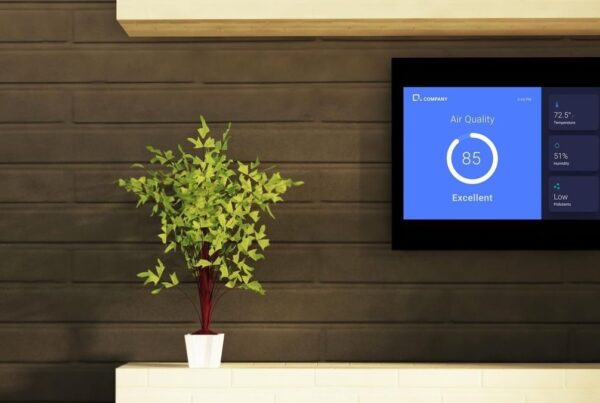Thinking back to my own university and school days, I can recall shivering or squirming in my seat being too hot or too cold, sitting 2- or 3-hour exams in stuffy halls and feelings of claustrophobia in bustling corridors. Whilst at the time this was an accepted part of school life, it doesn’t have to be. University, college and school buildings can become an integral part of the learning process, helping students to feel and learn better. Since I was at school, building technology has come a long way, as well as our understanding of the effects of a building on its occupants. With thousands of young people returning to University or college over the next few weeks, how can smart building technology support student and teachers to create a clean and healthy environment for learning and teaching?
Smart Education Buildings
Part of enabling a building to be “smart” is having a state-of-the-art building automation system to ensure that the heating, air-conditioning, lighting and other building systems are managed effectively. Whilst of course this involves optimizing them to increase energy efficiency, the indoor air quality is also vitally important. For example, ensuring CO2 levels are monitored and controlled is crucial in assisting concentration – too much CO2 causes the building occupants to become slow and sluggish, which isn’t great for teaching or learning. Increasing fresh air ventilation rates is now an important consideration as a result of the COVID crisis, so this has to be balanced against the energy cost penalty when more heating or cooling is required to achieve a high air change rate. The integration of indoor air quality (IAQ) sensors into the control system is becoming a “must” for classrooms. Open flexible integration software such as FIN Framework can help integrate such additions and deliver better control and management of building systems.
Cleaning Solutions
There is range of new tech that is designed with health and well-being in mind as the way people interact with buildings changes. Elevator and access companies such as KONE now have self-cleaning surface products for those frequently touched places such as buttons, and even a self-cleaning escalator handrail using UV technology – the handrail passes under a UV light, killing bacteria and viruses as it moves round. With this kind of tech, busy universities and schools can ensure buildings are clean whilst minimizing the disruption to students in the busy school day.
Smart Lighting = Smart students
Lighting has a huge impact on our well being – from ambient lighting that can mimic natural sunlight to automatic shades that adjust to the lighting levels in the room, building management technology can help ensure students have the best learning environment. A 2012 study found that students in rooms with poor lighting felt sleepy and unable to focus. Evidence also showed that lighting control to avoid discomfort and glare is very important and students felt well and better behaved in a place with good lighting quality. In addition, companies such as Enlighted are lighting the way with light sensor solutions that can analyse patterns of movement and show areas of congestion or frequently used spaces – this can help with cleaning schedules or help school optimize the flow of students around the building.
Data Analytics & Maintenance
Wouldn’t it be great to get all your building data in one place to ensure cost reductions but increase indoor and occupant comfort? With data analytics software, IoT, sensor and meter information can be brought together to identify trends and improvements, ensuring that occupant comfort is always a priority. For those in charge of maintaining school buildings, there is new, secure, remote connectivity technology such as FIN Edge2Cloud available to access building data remotely, removing the need to go onto site. This minimizes technician callouts and disruption for all.
Case study: University of Richmond
Investing in smart building technology has clear positive effects on the safety and well-being of students and teachers. Technologies like FIN Framework can help OEMs and distributors to deliver digital, agile and flexible building automation software to a range of educational institutions. Our FIN Stack technology is used at the University of Richmond, USA, connecting 50 campus buildings, 2,000 items of equipment across 2,500,000 square feet! FIN Stack helped unify the campus and has given the facility management team access to reports and historical data, helping them manage and make improvements for students and staff.
Reprinted with permission from J2 Innovations. Subscribe to the J2 Innovations blog and view the article in its originally published format at this link. Jenny Evans recently joined the J2 Innovations marketing team, having been previously with the Siemens UK&I Smart Infrastructure communications team. She is passionate about the building technology industry and brings over 14 years of experience in marketing, communications and strategy.


